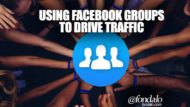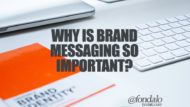Recent studies show that LinkedIn, Twitter and a company blog are the top three most effective before and after the sale engagement platforms for business to business (B2B) companies. Respectively, LinkedIn leads both pre and post sale engagement, followed by the other two platforms. Interestingly enough however, 93% of B2B marketing executives say they use Twitter for marketing, which was higher than LinkedIn by a full 2%. If LinkedIn leads customer engagement, but Twitter is used more frequently for B2B marketing, there may be additional variables that are not being disclosed.
Some additional B2B marketing statistics:
71% of B2B marketers use content marketing to generate leads. (MarketingProfs)
Nearly 2/3 of B2B marketers identified engaging key decision makers as their top challenge. (Forrester Research)
There are many variables associated with  success on any social platform, so brands must deploy best practices if they expect to be effective. For example, the frequency of posting on the company blog, the quality and length of the content, how much promotional posting is shared in their social streams and whether or not a brand responds to engagement from connections on social media are all factors that will impact effectiveness. Furthermore, engagement consists of both inbound and outreach activities, yet this recent study only seems to account for outbound engagement of customers.
success on any social platform, so brands must deploy best practices if they expect to be effective. For example, the frequency of posting on the company blog, the quality and length of the content, how much promotional posting is shared in their social streams and whether or not a brand responds to engagement from connections on social media are all factors that will impact effectiveness. Furthermore, engagement consists of both inbound and outreach activities, yet this recent study only seems to account for outbound engagement of customers.
For most B2B brands, spending time on the more consumer based social networks, such as Facebook and Google Plus should be supplemental. Since these platforms are either less frequented or more personal/friend based networks, brands should place their focus on the other platforms that have higher effectiveness with customer engagement.
Having said that, if your B2B company has a sales force, it may be wise that the sales team is connecting personally with their prospects beyond the brand connections. We know that people do business with people they know and like, therefore these more personal connections are invaluable during and after the sale.
How To Leverage B2B Social Platforms
Be Where Your Audience Is – Though LinkedIn appears to be the most effective social platform for engaging customers both pre and post sale for B2B products and services, that does not mean that brands should solely focus there. Understand the social platforms your target market spends their time on (3-4 social networks) and ensure your brand has consistent coverage on those platforms. The social platforms your brand focuses on should be the ones your audience prefers. Let them connect with you where THEY want to, not where you want to be.
Attraction Works – Regardless of the social networks your B2B firm has decided to employ, it is important that you understand that the most effective social media marketing provides value. At the core level, there needs to be a focus on providing information, content and media that is interesting, relevant and valuable to your audience. It’s about them, not you. Their interests, challenges and pitfalls. Consistently delivering content that speaks to your audience will attract a bigger audience, open up communication lines with them and ultimately create opportunities to discuss your products.
Stop The Spamming – Brands should also be careful not to succumb to the temptation of spamming connections. Both LinkedIn and Twitter are notorious for this activity, and using this tactic typically does far more harm than good. Social media is about relationships and earning the right to share what you do. It is not like email spam that allows you to pitch your stuff to complete strangers you only have an email address for. If you want to turn off prospects on a business platform, pitch them about your product and service before you have spent time getting to know them.
Invest – Business to business marketing within social media has become easier as more and more business professionals have embraced it on a daily basis. LinkedIn is clearly the leading platform for prospect and customer engagement and should be an integral part of any B2B effort. Be sure that your firm invests in social media with a long-term focus. Social isn’t the end-all, but rather supplemental, supportive media that can expand on what you’re already doing. There are no shortcuts, so invest the time and resources to do it properly and the results will come.
After The Sale – One huge mistake B2B brands make on social is forgetting your customer after the sale. Sometimes even more than consumer product brands, business to business firms rely on referrals and advocacy to generate traffic, leads and sales. Using customer outreach to maintain relationships once the sale has been achieved is a necessity. Make your customers feel valued and appreciated over the long-term and you will see significant advantages. Ignoring your customers due to lack of strategy or concern and you will find yourself replacing them instead of realizing additional growth from the relationship.
My experience with B2B marketing shows that earned relationships do in fact result in both short and long-term revenue. When your focus is long-term and revolves around consistent value, human connections and being helpful and responsive will deliver results. Being willing to earn the right to pitch your products and services goes a long way with social communities that are growing tired with the same old direct marketing tactics online.
Above all you need to figure out how to stand out and be unique with your social media presence. I’m sure your brand and products are unique, but spend more time making your social marketing effort unique and people will be far more receptive to what makes your brand different. Out execute your competition by following these best practices. Let your light shine …







Also leverage employees, their reach can far extend beyond the brands’ and carry tremendous influence and trust. See companies as big as HP, Dell down to smaller co’s like Coupa and Tableau get amazing results by involving employees w content sharing.
Rob,
That is definitely true! Great input.